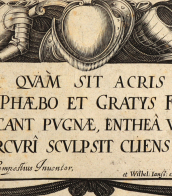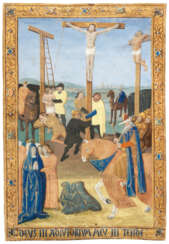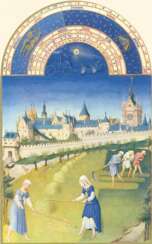жан коломб (1430 - 1493)
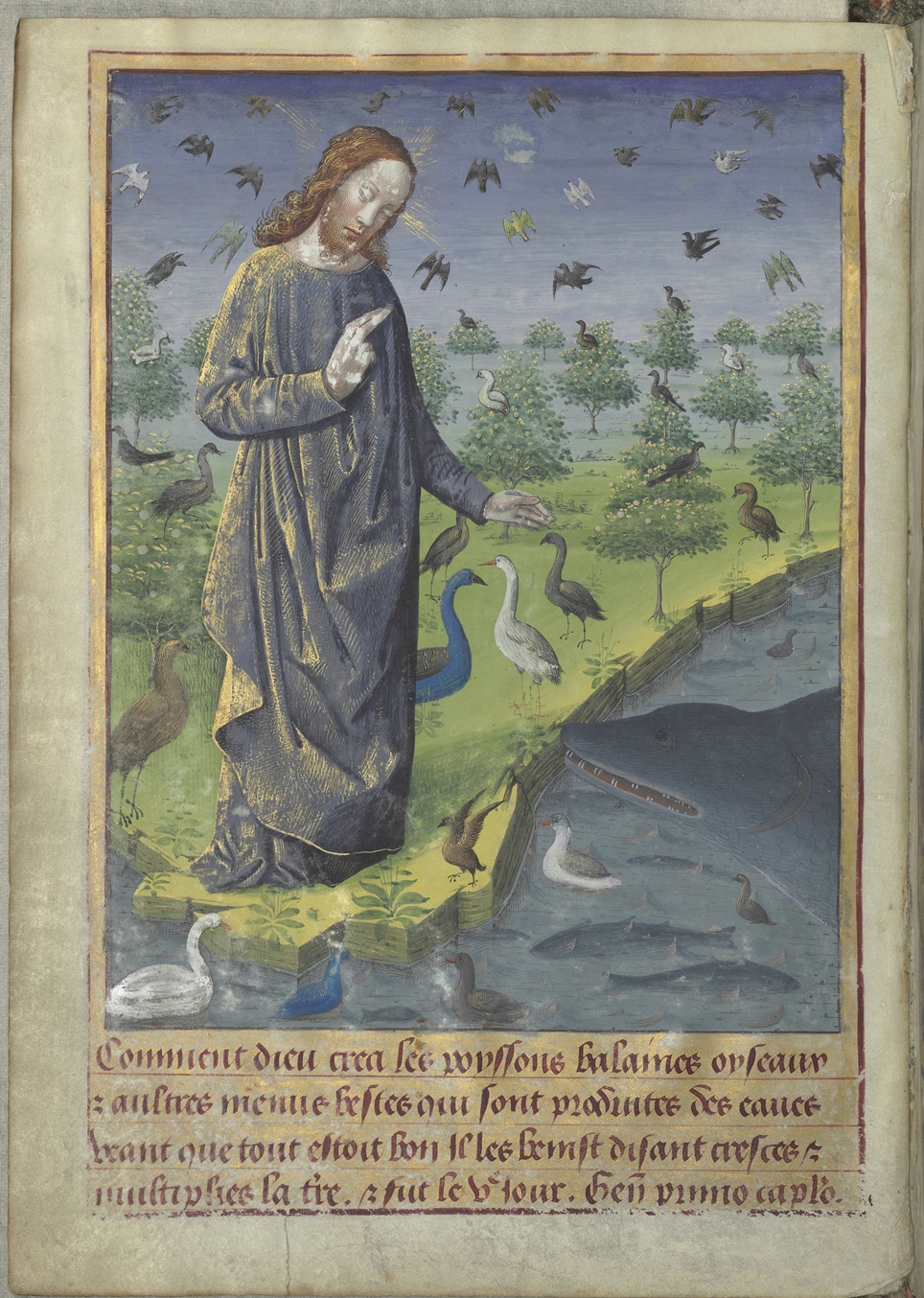
Jean Colombe was a French miniaturist and manuscript illustrator. He founded a dynasty of illuminators, including a son and grandson who continued his work even after his death.
Colombe is known to have decorated a large number of manuscripts. He was commissioned to illustrate both secular and religious texts, and he depicted scenes with many characters in elaborate architectural structures or landscapes. His illuminated manuscripts were decorated with gold or silver, brilliant colors, intricate drawings, or miniature images. Jean Colombe was patronized by Charlotte of Savoy, wife of Louis XI and a noted bibliophile. He illustrated manuscripts for the queen, her daughter Anne Beaujault, and members of the court. Colombe also entered the service of her nephew, Charles I, Duke of Savoy, who commissioned him to complete two unfinished manuscripts in his library: the magnificent Apocalypse of Jean Baptiste and Perronet Lamy and probably the most famous of all the Chapels, The Rich Estates of the Duke of Berry by the brothers de Limbourg.


Jean Colombe was a French miniaturist and manuscript illustrator. He founded a dynasty of illuminators, including a son and grandson who continued his work even after his death.
Colombe is known to have decorated a large number of manuscripts. He was commissioned to illustrate both secular and religious texts, and he depicted scenes with many characters in elaborate architectural structures or landscapes. His illuminated manuscripts were decorated with gold or silver, brilliant colors, intricate drawings, or miniature images. Jean Colombe was patronized by Charlotte of Savoy, wife of Louis XI and a noted bibliophile. He illustrated manuscripts for the queen, her daughter Anne Beaujault, and members of the court. Colombe also entered the service of her nephew, Charles I, Duke of Savoy, who commissioned him to complete two unfinished manuscripts in his library: the magnificent Apocalypse of Jean Baptiste and Perronet Lamy and probably the most famous of all the Chapels, The Rich Estates of the Duke of Berry by the brothers de Limbourg.
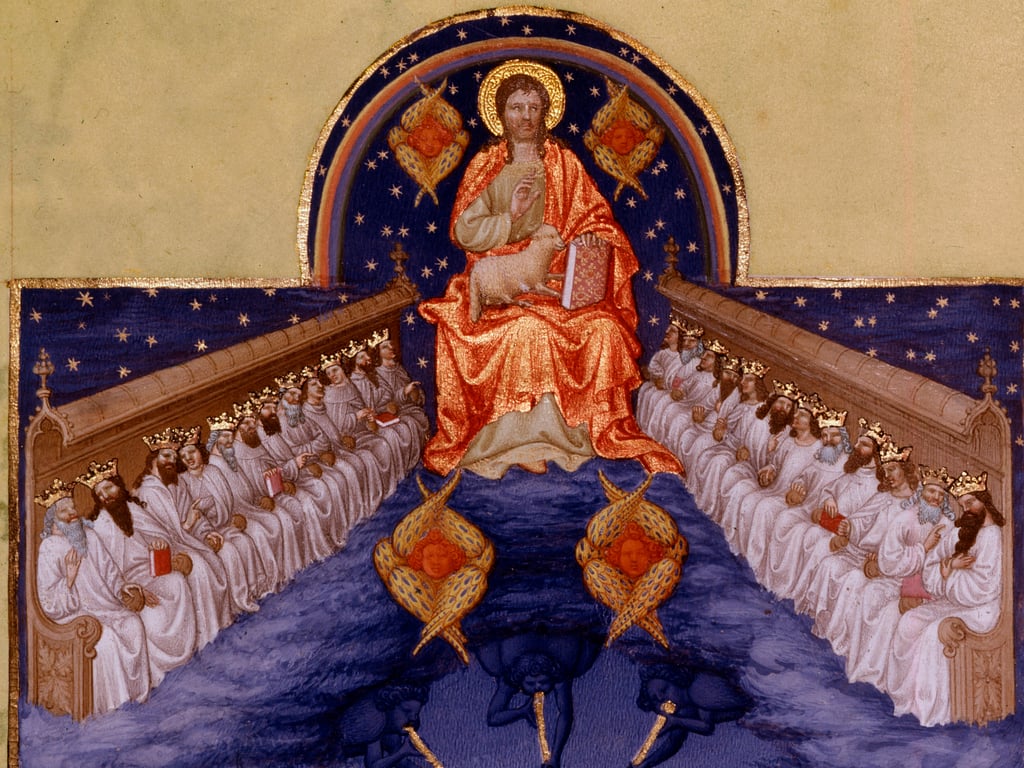
Pol de Limburg, also Paul van Lymborch or van Limburg, was an early 15th-century French miniaturist from the Northern Netherlands.
Together with his two brothers, Herman and Jean, Pol worked in Paris. As teenagers, all three entered the service of Jean de France, Duc de Berry. It was for him that two of the most lavishly illustrated books of hours (a popular form of private prayer book at the time) were created.
Pol evidently had the greatest skill among the brothers and to him belongs the bulk of the work. After the completion of the Red Gazetteers, the brothers set to work on the Duke de Berry's Three Rich Gazetteers. This work, considered their greatest creation, belongs among the finest examples of the International Gothic style.
The Limburg brothers left The Rich Days of the Duke de Berry unfinished, as they died almost simultaneously in 1416, possibly during a plague epidemic.
The Limbourg brothers are the best known of all late Gothic manuscript illuminators. Together they synthesized the innovations of other illuminators and developed a style of their own, characterized by fine lines, painstaking technique, and minute detail. Their "Rich Days of the Duc de Berry," completed about 1485 by Jean Collomb, is one of the milestones in the art of book illumination. It greatly influenced the course of early book illumination and foreshadowed the paths of Northern Renaissance art.
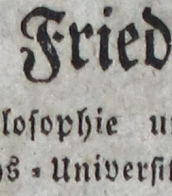

Jean Colombe was a French miniaturist and manuscript illustrator. He founded a dynasty of illuminators, including a son and grandson who continued his work even after his death.
Colombe is known to have decorated a large number of manuscripts. He was commissioned to illustrate both secular and religious texts, and he depicted scenes with many characters in elaborate architectural structures or landscapes. His illuminated manuscripts were decorated with gold or silver, brilliant colors, intricate drawings, or miniature images. Jean Colombe was patronized by Charlotte of Savoy, wife of Louis XI and a noted bibliophile. He illustrated manuscripts for the queen, her daughter Anne Beaujault, and members of the court. Colombe also entered the service of her nephew, Charles I, Duke of Savoy, who commissioned him to complete two unfinished manuscripts in his library: the magnificent Apocalypse of Jean Baptiste and Perronet Lamy and probably the most famous of all the Chapels, The Rich Estates of the Duke of Berry by the brothers de Limbourg.

Pol de Limburg, also Paul van Lymborch or van Limburg, was an early 15th-century French miniaturist from the Northern Netherlands.
Together with his two brothers, Herman and Jean, Pol worked in Paris. As teenagers, all three entered the service of Jean de France, Duc de Berry. It was for him that two of the most lavishly illustrated books of hours (a popular form of private prayer book at the time) were created.
Pol evidently had the greatest skill among the brothers and to him belongs the bulk of the work. After the completion of the Red Gazetteers, the brothers set to work on the Duke de Berry's Three Rich Gazetteers. This work, considered their greatest creation, belongs among the finest examples of the International Gothic style.
The Limburg brothers left The Rich Days of the Duke de Berry unfinished, as they died almost simultaneously in 1416, possibly during a plague epidemic.
The Limbourg brothers are the best known of all late Gothic manuscript illuminators. Together they synthesized the innovations of other illuminators and developed a style of their own, characterized by fine lines, painstaking technique, and minute detail. Their "Rich Days of the Duc de Berry," completed about 1485 by Jean Collomb, is one of the milestones in the art of book illumination. It greatly influenced the course of early book illumination and foreshadowed the paths of Northern Renaissance art.
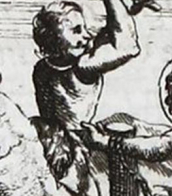

Jean Colombe was a French miniaturist and manuscript illustrator. He founded a dynasty of illuminators, including a son and grandson who continued his work even after his death.
Colombe is known to have decorated a large number of manuscripts. He was commissioned to illustrate both secular and religious texts, and he depicted scenes with many characters in elaborate architectural structures or landscapes. His illuminated manuscripts were decorated with gold or silver, brilliant colors, intricate drawings, or miniature images. Jean Colombe was patronized by Charlotte of Savoy, wife of Louis XI and a noted bibliophile. He illustrated manuscripts for the queen, her daughter Anne Beaujault, and members of the court. Colombe also entered the service of her nephew, Charles I, Duke of Savoy, who commissioned him to complete two unfinished manuscripts in his library: the magnificent Apocalypse of Jean Baptiste and Perronet Lamy and probably the most famous of all the Chapels, The Rich Estates of the Duke of Berry by the brothers de Limbourg.

Pol de Limburg, also Paul van Lymborch or van Limburg, was an early 15th-century French miniaturist from the Northern Netherlands.
Together with his two brothers, Herman and Jean, Pol worked in Paris. As teenagers, all three entered the service of Jean de France, Duc de Berry. It was for him that two of the most lavishly illustrated books of hours (a popular form of private prayer book at the time) were created.
Pol evidently had the greatest skill among the brothers and to him belongs the bulk of the work. After the completion of the Red Gazetteers, the brothers set to work on the Duke de Berry's Three Rich Gazetteers. This work, considered their greatest creation, belongs among the finest examples of the International Gothic style.
The Limburg brothers left The Rich Days of the Duke de Berry unfinished, as they died almost simultaneously in 1416, possibly during a plague epidemic.
The Limbourg brothers are the best known of all late Gothic manuscript illuminators. Together they synthesized the innovations of other illuminators and developed a style of their own, characterized by fine lines, painstaking technique, and minute detail. Their "Rich Days of the Duc de Berry," completed about 1485 by Jean Collomb, is one of the milestones in the art of book illumination. It greatly influenced the course of early book illumination and foreshadowed the paths of Northern Renaissance art.
